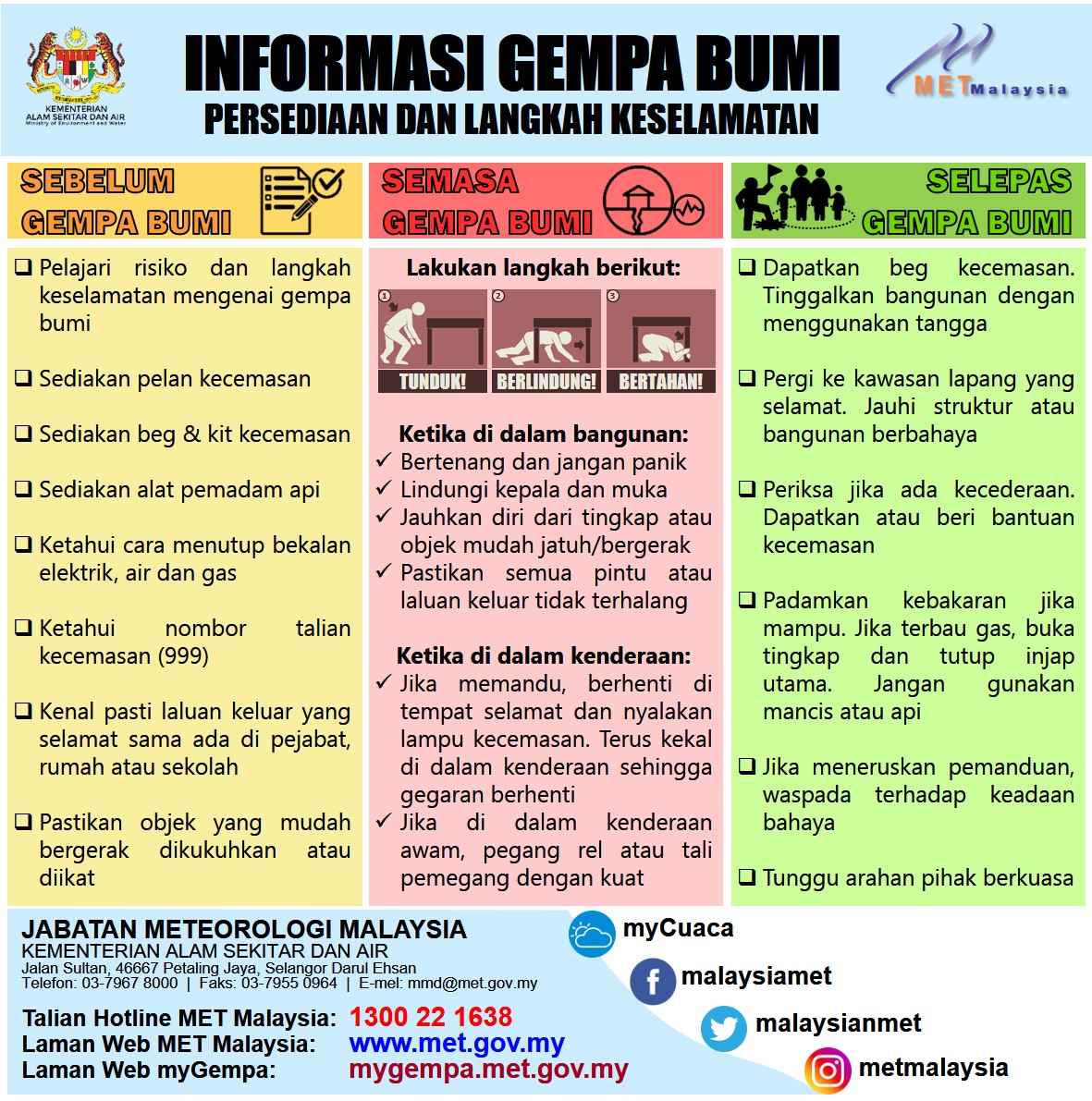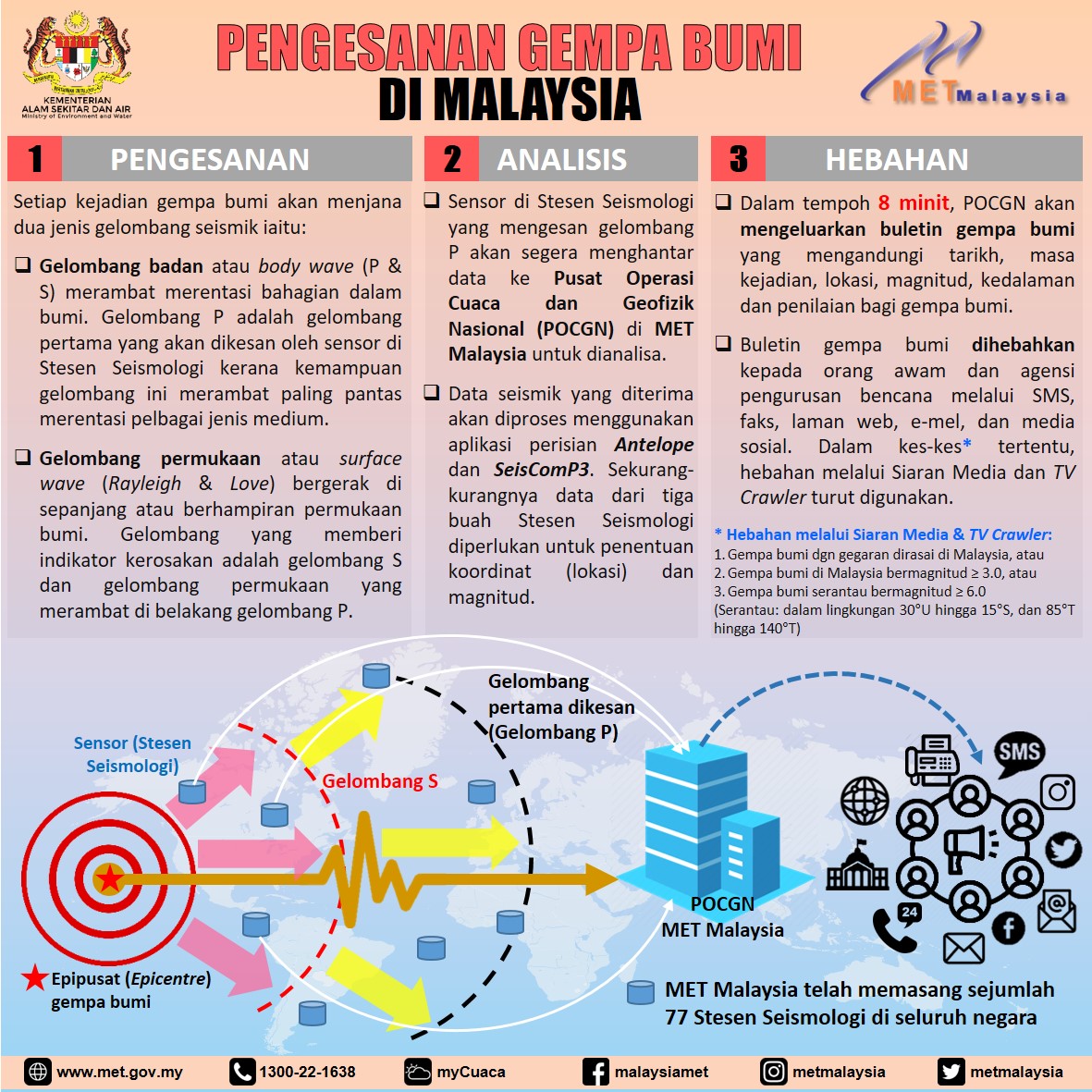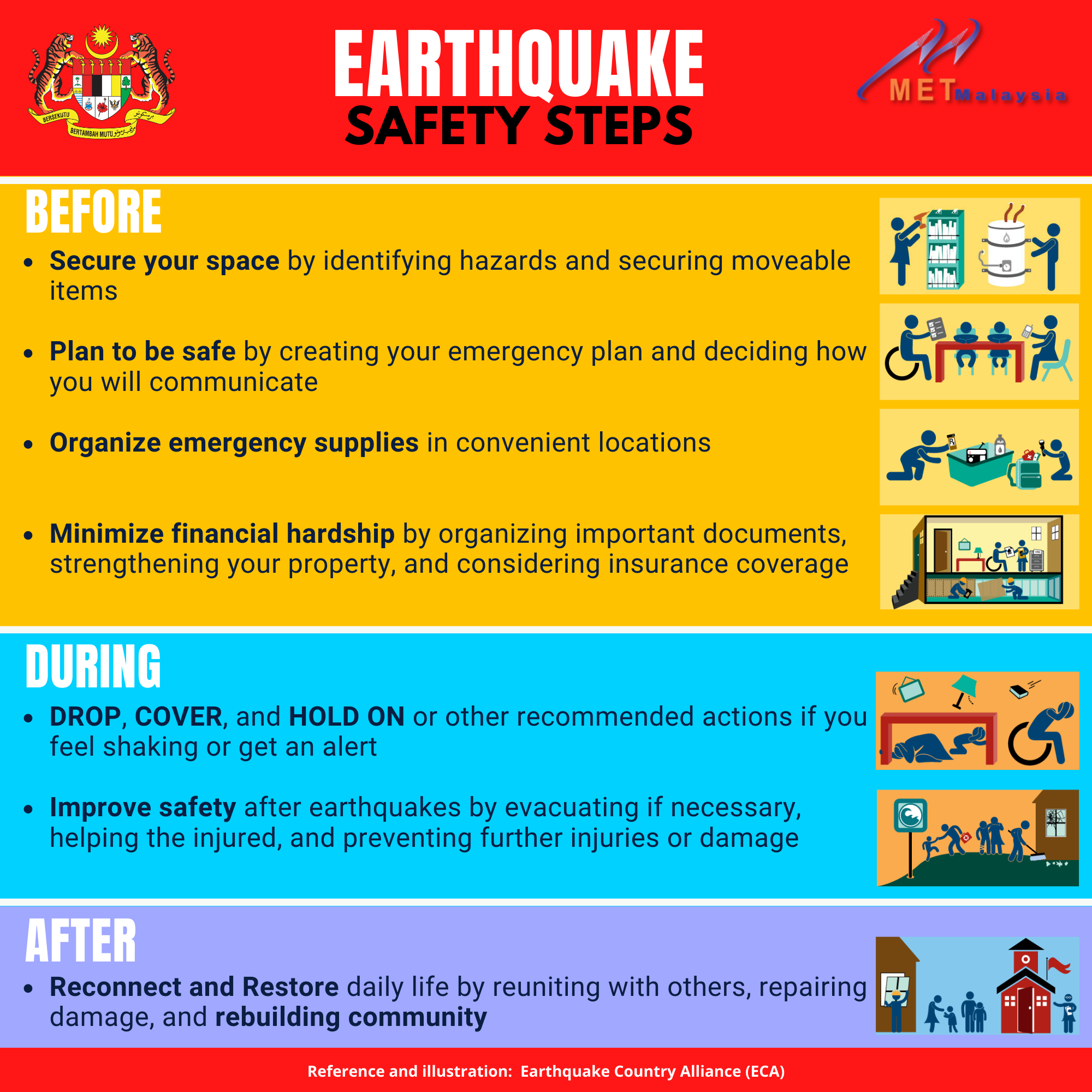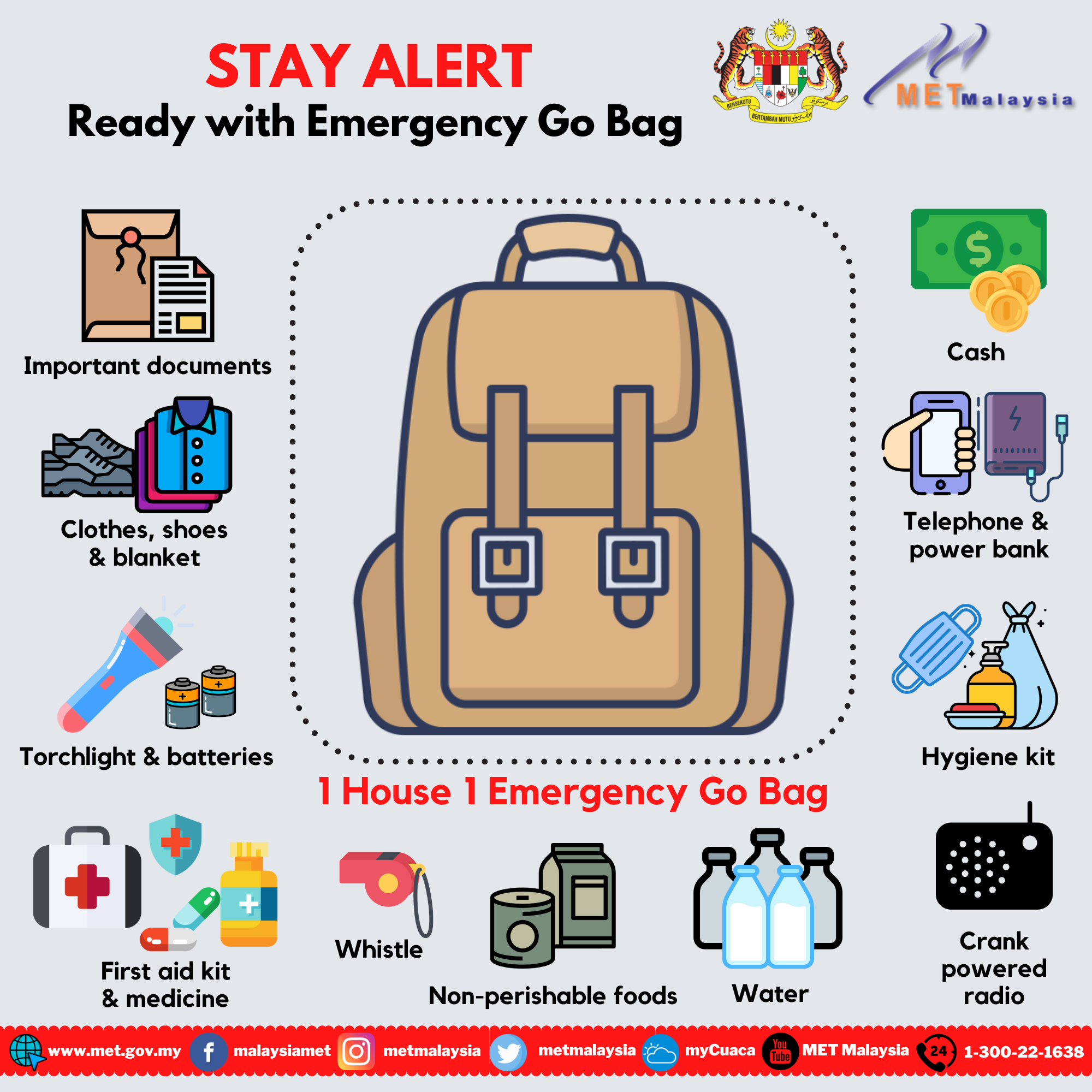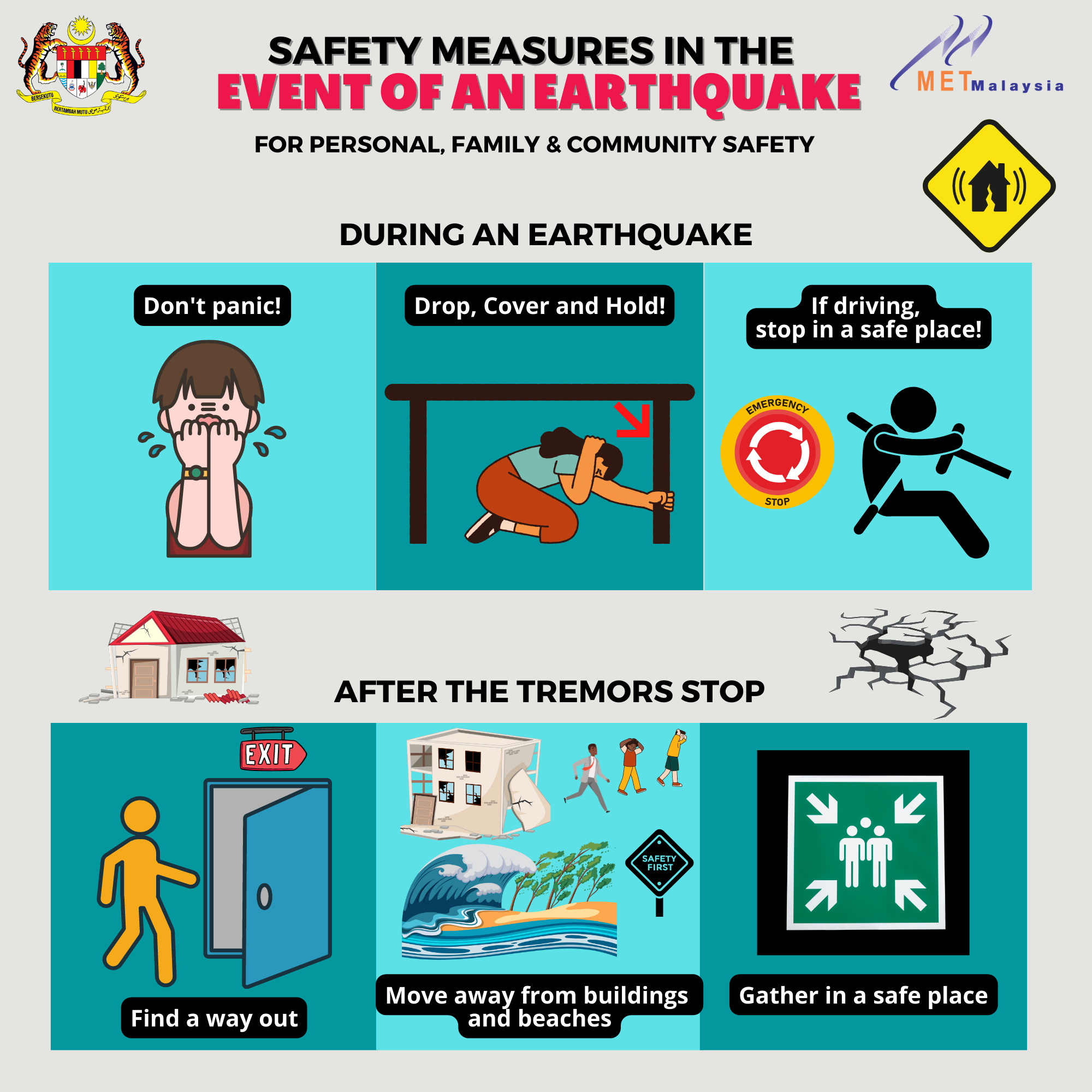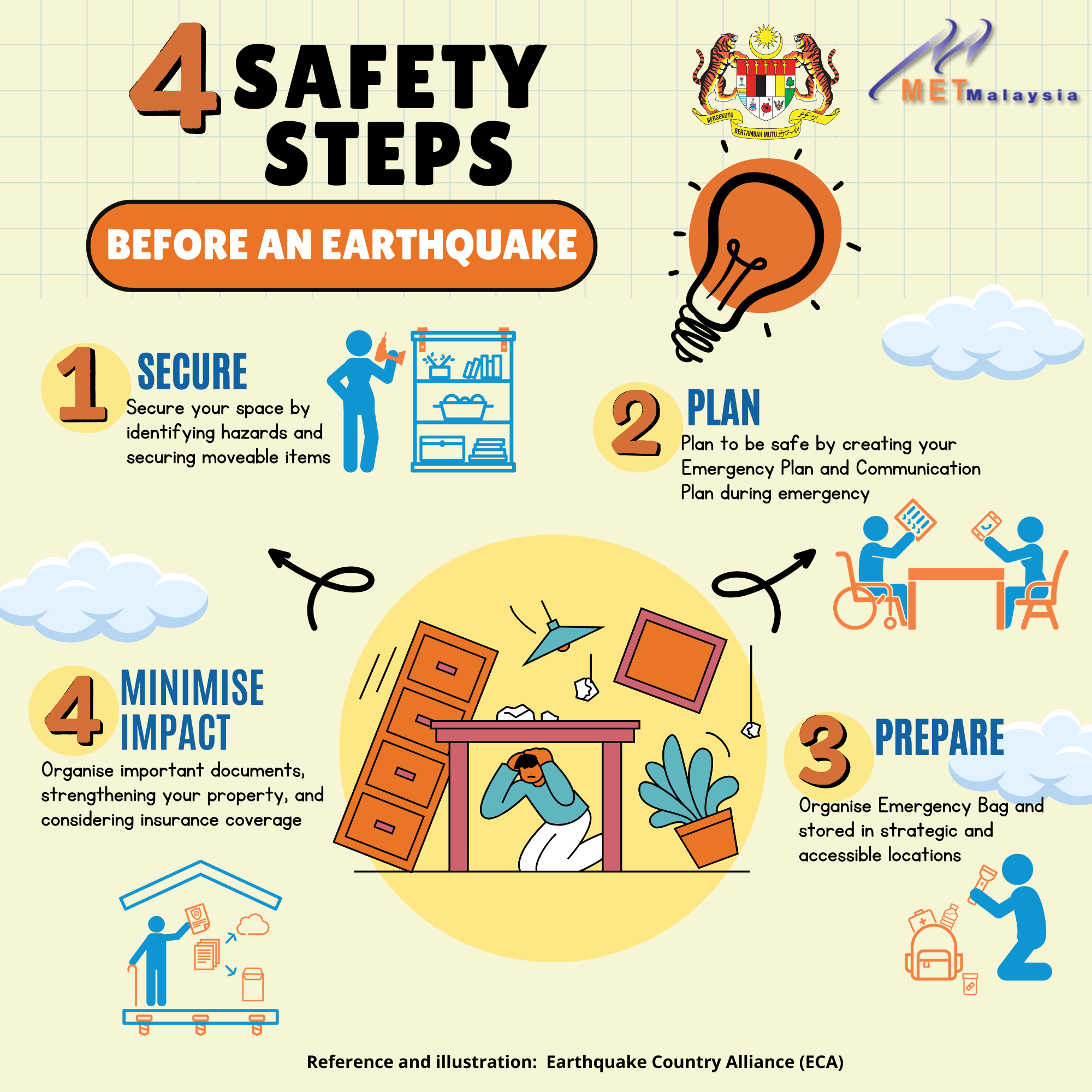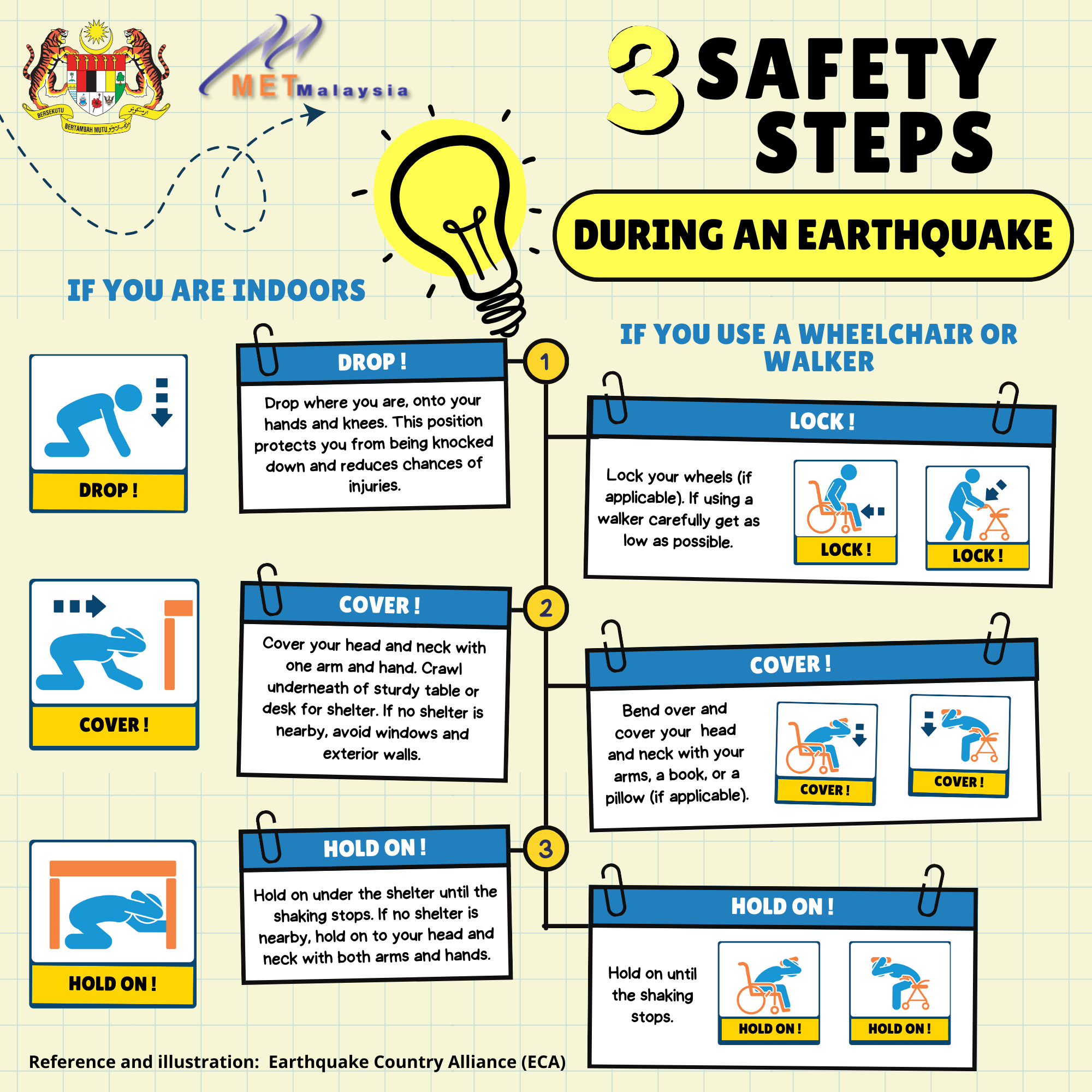What is an Earthquake?
An earthquake is a sudden movement and vibration that happens on the surface of the earth caused by movements of rocks along a fault or at a plate boundary. However, earthquakes also can be originated by volcanic activity. The greater the size of the earthquake, the greater the destruction it might have caused.
Seismicity in Malaysia and around the region
Malaysia is close to the most two seismically active plate boundaries, the inter-plate boundary between the Indo-Australian and Eurasian Plates on the west and the inter-plate boundary between the Eurasian and Philippines Sea Plates on the east. Major earthquakes originating from these plate boundaries have been felt in Malaysia. Tremors felt along the west coast of Peninsular Malaysia are originating from large earthquakes in the active seismic area of Sumatra and Andaman Sea. Malay Peninsula (e.g., Bukit Tinggi, Jerantut, Temenggor and Kuala Pilah) and East Malaysia has experienced earthquakes of local origin. These local earthquakes are associated with active fault that exists in Malay Peninsula, Sabah and Sarawak. Several potential active faults have been delineated and local earthquakes in East Malaysia appear to be related to some of them. In addition to the local earthquakes, East Malaysia is also affected by tremors originating from large earthquakes located over Southern Philippines and Northern Sulawesi.
Type of fault line
Fault line is the line on the rock or earth surface that has undergone friction due to movement between two blocks in opposite relative position. It can be divided into 3 main groups namely, Normal Fault, Reverse Fault and Strike-Slip Fault.
Normal Fault happened when the relative hanging wall move down towards the foot wall.
Reserve Fault happened when the relative hanging wall move-up towards the foot wall.
Strike-Slip Fault happened when the movement between two blocks in distinct ways horizontally.
What You Should Do During and After an Earthquake
If you are indoors
Stay indoors. Take cover under a sturdy table, desk, and bench or brace yourself in a doorway or corner.
Stay away from windows, books, cabinets, heavy mirrors, hanging plants and other heavy objects, which may slide and topple.
Grab anything handy such as coat, blanket, books, newspapers, cardboard box, etc to shield your head and face from falling debris and splintering glass.
Do not use candles, matches or other open flames because of possible gas leaks.
Douse all fires.
if you are in a high-rise building
Get under a desk or similar heavy furniture.
Stay away from windows.
Do not rush for exits.
Never use elevators as a power may fail.
Stay in the building on the same floor.
if you are outdoors
Move to an open area cautiously away from power lines, power poles, trees, high buildings, walls, and lamp posts.
The greatest danger from falling debris is just outside doorways and close to outer walls.
Stay away from fallen power lines.
Stay in the open areas until the shaking stops.
IF YOU ARE in A SIDE WALKER NEAR BUILDING
IF IN A CROWDED STORE
IF IN A MOVING CAR
Stop the car quickly as safety permits in the best available space. However, do not stop on or under bridges or overpasses or overhead wires.
Stay in the car until the shaking stops.
When you drive after shaking, watch for hazards created by earthquake such as fallen of falling objects, downed electric wires or broken or undermined roadways.
Turn on the radio or television to get the latest emergency information. If electricity is down, turn on a battery operated radio.
Remain calm and assess the situation. Be prepared for additional earthquakes shocks called "aftershocks". Although most of these are smaller than the main shock, some may be large enough to cause additional damage.
Check for injuries. When the shaking stops, there may be considerable damage and people may be injured. Administer emergency first aid when necessary. However, do not attempt to move seriously injured persons unless they are in immediate danger of further injury.
Check for fires and fire hazards. Put out fires immediately if you can.
Check for damage to utilities and appliances. Wear sturdy shoes. If you smell gas, open windows and shut off main valve. Do not light matches or use open flames. Use a flashlight.
Never touch downed power lines or objects touched by downed lines.
Check closet and storage shelf areas, but open doors carefully and watch out for falling objects.
Check to see if sewage lines are intact before flushing the toilet.
Immediately clean up spilled medicines, drugs and other potentially harmful materials.
Do not eat or drink anything from open containers near shattered glasses.
Do not use the telephone except to call for help, to report serious emergencies (medical, fire or criminal).
Stay out of severely damaged buildings. Aftershocks can shake them down.
Cooperate with public safety efforts. Do not go into damaged areas unless your assistance is required.
Keep streets clear for passage of emergency vehicles.
Be reassuring and helpful to your children and others who may suffer psychological trauma from the earthquake.



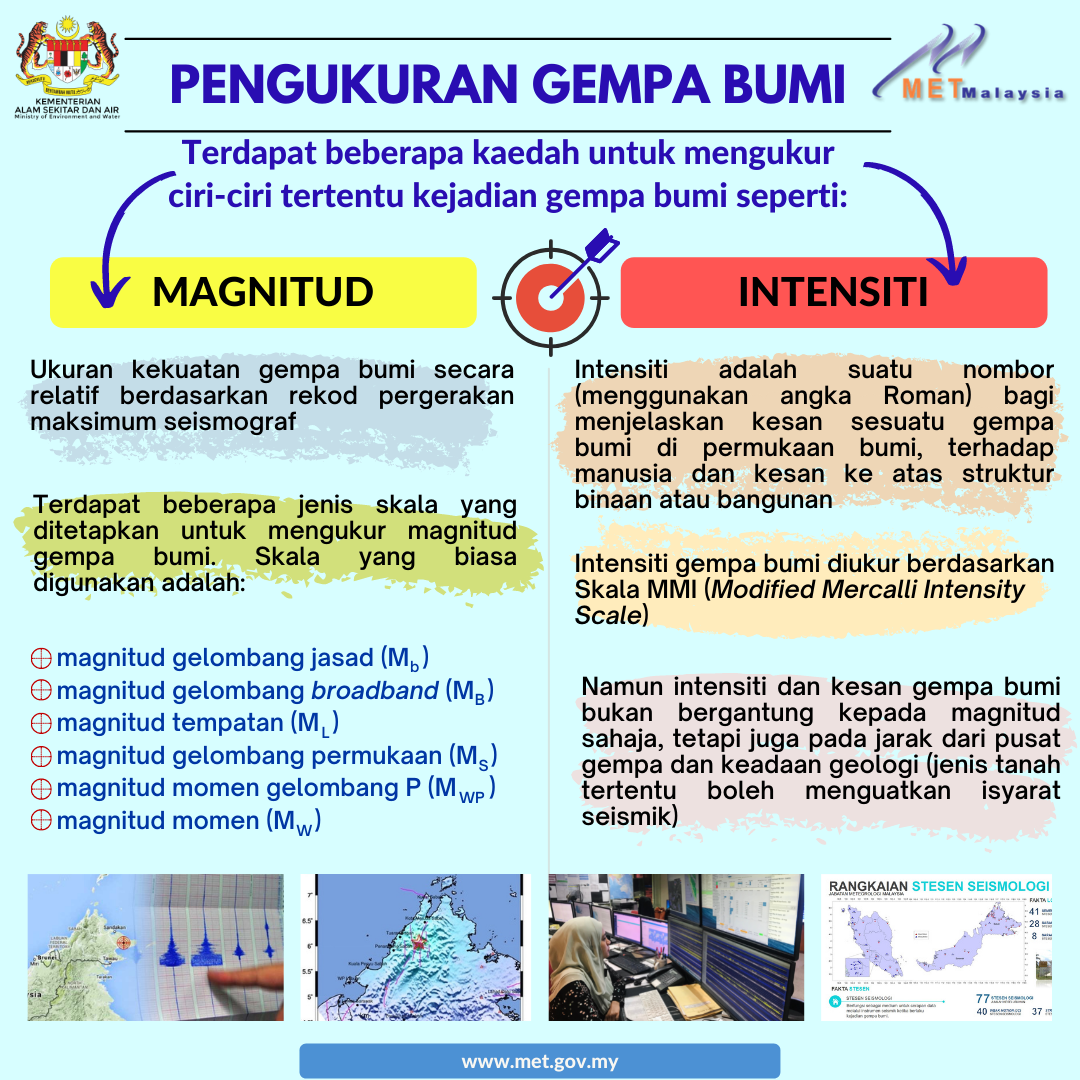
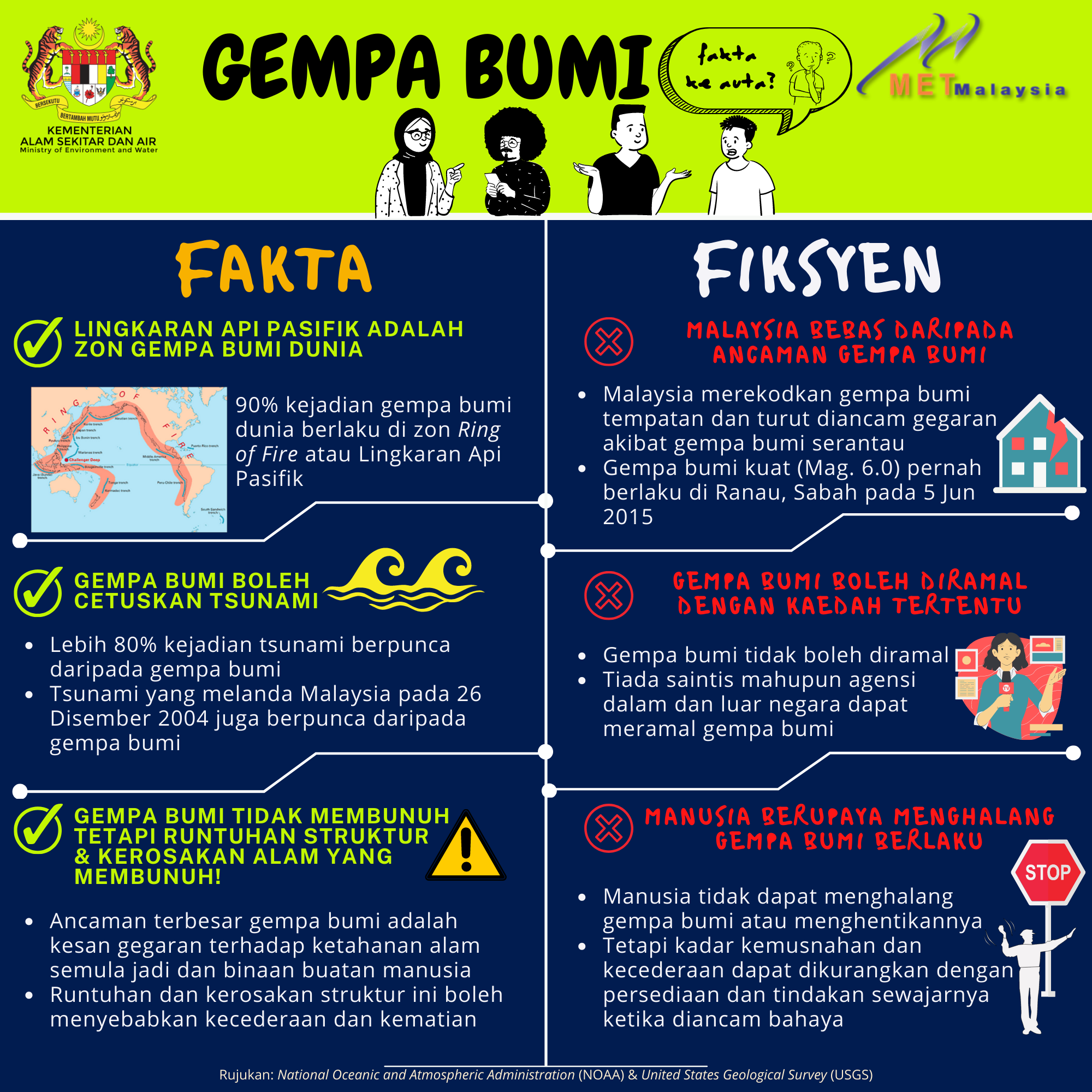
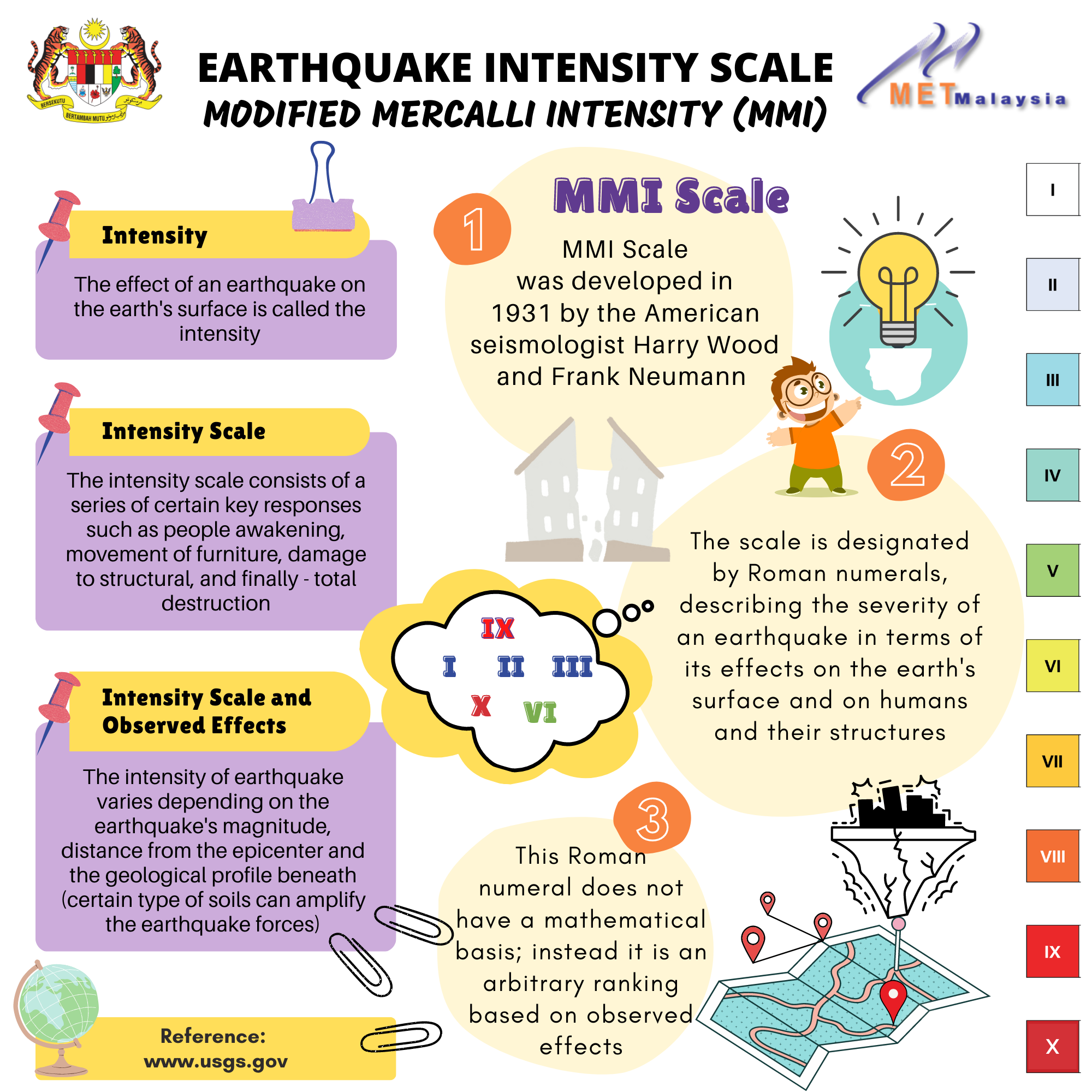
.png)
